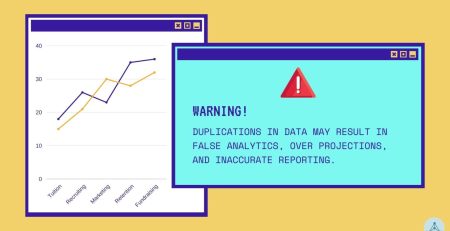Interoperability in the Higher Ed Industry Explained
Interoperability has become a trending buzzword in the post-pandemic digital age across every major industry, from finance to healthcare and education. However, most higher ed institutions remain blissfully unaware of what this term means even though it’s already a part of their campus ecosystem and daily operations in the form of information exchange among students, teachers, and administrators.
In this post, we’ll explain in detail what interoperability is and discuss its importance in the higher ed industry today.
What Is Interoperability?
In the modern age, electronic data is king. Even the country’s most traditional colleges and institutions employ different equipment, systems, and applications to process data and communicate internally and externally. As a result, data exchange has become a mandatory function in daily operations.
Interoperability refers to combining or integrating multiple systems to enable centralization and cross-functional communication/collaboration. In other words, it’s the ability to connect every app, system, and IT equipment using the internet to enable data sharing between different sources.
The Importance of Interoperability in Higher Ed Institutions
Since COVID-19, there’s been a rapid influx of new educational systems and apps in the market. As a result, higher ed departments must process more data than ever from different sources. Thus, they must ensure that their IT infrastructure and teams have the functionality necessary to carry out their digitalized tasks and activities while ensuring data integrity.
Here, interoperability facilitates every connected college department and individual with organized, authenticated, and effective data exchange between different apps and information systems. Here are some of the core benefits of interoperability in higher ed institutions:
1. Automation and Centralization
Interoperability enables different data systems to speak to each other without human intervention. It enables teachers, administrators, and other users to reduce manual and repetitive tasks associated with data usage, analysis, and maintenance, such as physical transfers and reporting.
Automation can accelerate operations and increase data integrity across different domains, from enrollment to IT, different faculties, and other connected departments. Moreover, with data centralized, every user can access authentic, up-to-date information.
2. Improved Data Utilization
Interoperability also allows colleges to use underutilized databases by improving visibility across their digital ecosystem. Connecting and linking every dataset enables users to generate more actionable insights instead of relying on limited information to make key decisions.
3. Improved Productivity
Interoperability reduces the time different users receive information, which is a significant benefit for connected college departments. It allows these departments to exchange information faster and improve operational efficiency.
Plus, when necessary data is readily available to different departments in a single place, users can complete their tasks more efficiently. With readily available data, the campus’s productivity levels increase.
4. Enhanced Security
When different information systems are connected to a single hub, they reduce the number of entry points for hackers and other malicious actors. Moreover, since everything is connected, administrators have a detailed log of the data flow from their systems. As a result, interoperability is a great way to enhance security.
5. Data Unity
In the digital age, many on-campus operations are online. Now, departments deal with more errors than ever due to data inconsistencies. Interoperability ensures that the data flowing in their campus’s digital ecosystem is authentic, deduplicated, and up-to-date at all times. However, this feature depends on the quality of the system employed.
Improving Interoperability Using AMSA’s Connect IRM Platform
AMSA Connect’s IRM platform is one of the market’s most powerful campus management platforms that enable interoperability. It is a massive step up from traditional iPaaS solutions as it offers far more digitalization capabilities through APIs.
As a result, users can connect to more third-party applications than ever and enjoy other features, such as real-time data analytics and a social media-like feed that centralizes data flow and communication onto a single interface.
This single sign-on platform is all you need to extract, authenticate, streamline, centralize, and share data from different sources and optimize connectivity and operational efficiency.
Get Started with AMSA Connect
As you can see, interoperability unlocks endless possibilities for digitalization and data analysis in colleges. However, to enable operability, you need a powerful solution that checks all boxes – security, scalability, integration compatibility, ease of use, etc.
AMSA Connect’s IRM Platform is a state-of-the-art solution designed specifically to optimize interoperability and unlock new levels of data exchange. So, get in touch with our team immediately and try out this game-changing platform.










Leave a Reply